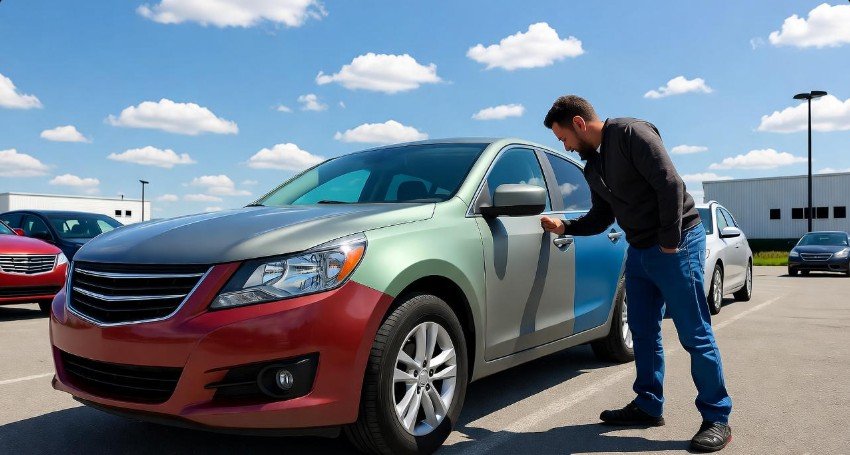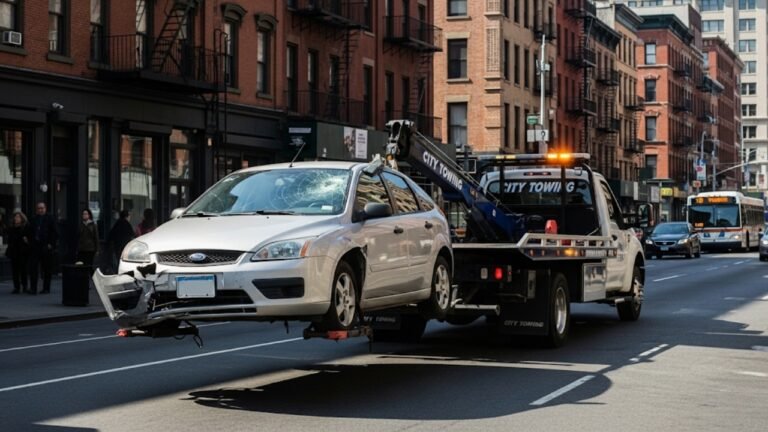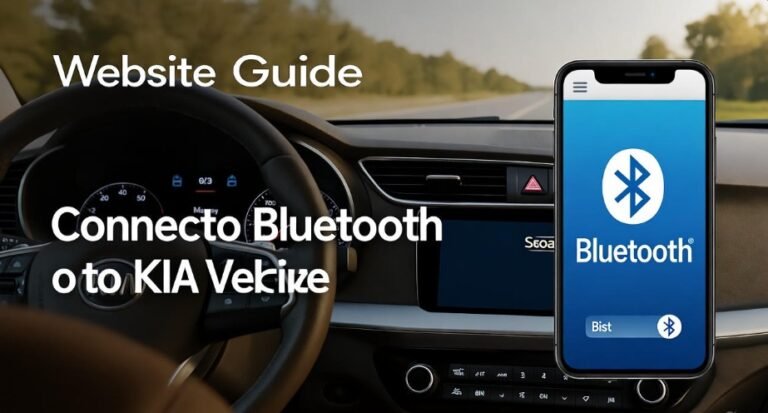Should I Buy a Car With a Rebuilt Title? The Truth Unveiled

Have you ever come across a car deal that seems almost too good to be true? Maybe it’s a sleek sedan or a tough SUV priced way below the market value, but then you notice those two words — “rebuilt title.” Suddenly, the excitement fades, and doubt kicks in.
Buying a car with a rebuilt title can feel like walking a fine line between getting a great bargain and stepping into a costly mistake. For some, it’s a smart way to save money. For others, it can turn into a nightmare of hidden problems and endless repairs. The truth? It all depends on your knowledge, risk tolerance, and due diligence.
In this article, we’ll uncover everything you need to know — from what a rebuilt title really means to the pros, cons, and expert tips for making a confident decision. Think of this as your friendly, honest guide to understanding whether that “too-good-to-be-true” car is actually worth your trust.
What Does a Rebuilt Title Really Mean?

Before you can decide whether to buy a car with a rebuilt title, you need to understand what those words actually represent. A rebuilt title isn’t just a label — it’s a story.
When a car suffers major damage from an accident, flood, fire, or theft, the insurance company often declares it a total loss. That means the cost to repair the car exceeds a certain percentage of its market value (often around 70–80%). Once written off, the car receives a salvage title, making it illegal to drive until repaired and re-inspected.
After passing state-mandated inspections confirming that it’s safe to drive again, the car earns a rebuilt title. In essence, a rebuilt car has been to the edge and back — damaged, repaired, and reborn for the road.
Here’s a simple comparison:
| Title Type | What It Means | Driveable? |
|---|---|---|
| Clean Title | No major damage, standard ownership | ✅ Yes |
| Salvage Title | Totaled by insurance, not roadworthy | ❌ No |
| Rebuilt Title | Repaired after salvage, passed inspection | ✅ Yes |
Buying a rebuilt title car is a bit like adopting a rescued pet. It’s not perfect, but with care and attention, it can bring you years of service — as long as you know what you’re getting into.
Why Do Cars End Up With Rebuilt Titles?
Cars don’t just wake up one day with a rebuilt title. Something significant must have happened to them. Understanding why helps you gauge the potential risks and reliability of such a vehicle.
Here are the most common causes:
-
Severe Accidents: This is the top reason cars get branded as salvage. A collision that crushes the front end, bends the frame, or deploys multiple airbags can lead insurers to write off the car as a total loss.
-
Flood Damage: Flooded vehicles often suffer from corroded wiring, mold, or damaged engines — problems that can resurface years later, even after repairs.
-
Fire Damage: While some fire-damaged cars are repaired well, heat can compromise electrical systems and structural integrity.
-
Theft Recovery: When stolen cars are missing for months, insurers pay out the claim. If later recovered with minimal damage, they might still carry a rebuilt title.
-
Natural Disasters: Hurricanes, earthquakes, or tornadoes can cause widespread damage that sends thousands of vehicles into salvage yards.
Not all rebuilt cars are equal. Some were fixed with high-quality parts and craftsmanship, while others were rushed back together just to make a quick sale. That’s why a thorough inspection is non-negotiable before you sign the papers.
The Pros of Buying a Car With a Rebuilt Title
Let’s face it — the biggest reason anyone considers buying a car with a rebuilt title is the price. But beyond the savings, there are a few other unexpected benefits worth mentioning.
1. Massive Cost Savings
A car with a rebuilt title can cost 20–50% less than a similar model with a clean title. For budget-conscious buyers, that’s a huge difference. Imagine getting a 2021 Honda Accord for the price of a 2017 model — tempting, right?
2. Access to Newer Models
Since insurance companies often total newer cars that suffer significant damage, rebuilt title vehicles are sometimes just a few years old. This means you can enjoy modern tech features, better fuel efficiency, and advanced safety systems for less money.
3. Quality Repairs (Sometimes Better Than Factory)
When done right, some rebuilds can actually improve upon factory flaws. Professional rebuilders use OEM parts and advanced techniques to restore vehicles. A well-repaired rebuilt car might perform just as well as — or sometimes better than — a used car that’s never been in an accident but poorly maintained.
4. Opportunity for Car Enthusiasts
If you enjoy working on cars, a rebuilt title vehicle can be a rewarding project. You get to know every part of your car inside and out, ensuring it stays reliable for years to come.
Buying a rebuilt title car can feel like striking gold — if you dig in the right place and know how to tell real value from a polished illusion.
The Cons You Can’t Ignore
But here’s the other side of the coin — and it’s a big one. While the savings are attractive, the risks can be significant. Buying a rebuilt title car isn’t for everyone.
1. Lower Resale Value
Cars with rebuilt titles almost always have lower resale values. When the time comes to sell, you may find it hard to attract buyers, or you’ll have to accept a much lower price.
2. Financing Challenges
Not all lenders are comfortable financing rebuilt vehicles. Some banks or credit unions may refuse loans altogether, while others may charge higher interest rates due to the perceived risk.
3. Limited Insurance Options
Many insurance companies are cautious about rebuilt title cars. Some offer only liability coverage, not comprehensive or collision, which can leave you vulnerable in case of another accident.
4. Hidden Damage
Even if a car looks and drives fine today, underlying issues might surface later. Electrical problems, frame misalignment, or premature rust are common long-term consequences of poor repairs.
5. Difficulty Getting Warranty Coverage
Most rebuilt title cars don’t qualify for manufacturer warranties or extended protection plans. That means any future repairs come straight out of your pocket.
In short, buying a rebuilt title car is like walking into a used bookstore — some books are gems, others are missing pages. The key is knowing how to read between the lines before you buy.
Key Factors to Consider Before Buying
If you’re still intrigued by the idea of saving thousands on a rebuilt title car, don’t rush. There are crucial steps to take before signing that bill of sale.
1. Get a Professional Inspection
Always hire a trusted mechanic to conduct a pre-purchase inspection. They can spot hidden issues such as uneven tire wear, misaligned panels, or frame welding that isn’t visible to the untrained eye.
2. Review the Vehicle’s History Report
Use services like Carfax or AutoCheck to review the vehicle’s past. Check when and how it was damaged, what parts were replaced, and whether it passed state inspections.
3. Verify Documentation
Ensure that the title clearly states “rebuilt” — not “salvage.” A salvage title means the car hasn’t passed inspection and isn’t legal to drive.
4. Evaluate Your Risk Tolerance
Ask yourself: how comfortable are you with uncertainty? A rebuilt title car always carries a bit of a question mark. If that keeps you up at night, it might not be the right choice.
5. Consider Insurance Ahead of Time
Before buying, contact your insurance provider to confirm if they’ll cover a rebuilt title car and at what cost.
6. Think Long-Term
If you plan to drive the car for many years, resale value matters less. But if you like upgrading every few years, a rebuilt title might hurt you financially when selling or trading in.
When Buying a Rebuilt Title Car Makes Sense
Contrary to what some might say, buying a car with a rebuilt title isn’t always a bad idea. In fact, it can be a smart move in specific situations:
-
You’re on a tight budget and want a newer car with modern features without paying full price.
-
You trust the seller and can verify that the car was repaired by certified professionals.
-
You plan to keep the car long-term and aren’t worried about resale value.
-
You’re mechanically inclined and comfortable handling minor repairs yourself.
If these points describe you, a rebuilt title car could be an opportunity to save big while still getting reliable transportation.
Signs of a Well-Repaired Rebuilt Title Vehicle
Not all rebuilt cars are created equal. Here’s what to look for when trying to identify a well-repaired one:
-
Even gaps between panels and doors
-
Smooth paint finish without overspray
-
Consistent tire wear (indicating proper alignment)
-
No warning lights on the dashboard
-
Original VIN tags intact on all major parts
-
Clean, rust-free undercarriage
If everything checks out and the car drives smoothly without vibrations or noises, that’s a good sign the rebuild was done right.




